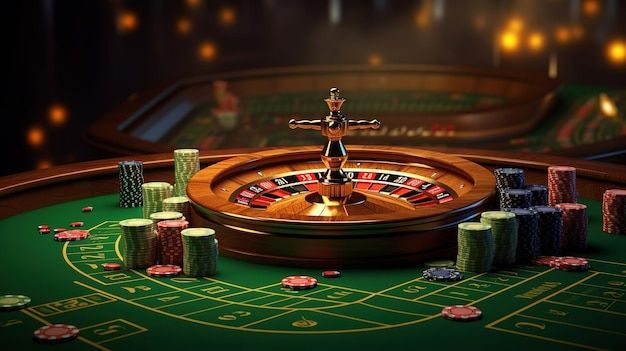Introduction: The Timeless Allure of the Wheel
In the glittering pantheon of casino entertainment, no game captures the essence of pure chance and high-stakes glamour quite like Roulette. French for “little wheel,” this game is remarkably simple to play yet steeped in centuries of history, making it a universal symbol of the casino floor. It is a game where the only element is luck, and the difference between winning and losing is determined by the final, dramatic bounce of a small
สมัคร ufasnake white ball.1
Origins: From Pascal’s Mistake to Casino Staple
The invention of roulette is often credited, somewhat erroneously, to 17th-century French mathematician Blaise Pascal, who was attempting to invent a perpetual motion machine. While he failed in his primary goal, the mechanism he created laid the groundwork for the modern roulette wheel.
The game as we know it today was refined in the 18th and 19th centuries. The critical addition of the single ‘0’ pocket (and later the double ’00’ in America) by the French brothers François and Louis Blanc in the 1840s established the vital element that gives the casino its long-term mathematical advantage—the House Edge.
Gameplay: A Simple Bet, Endless Possibilities
Roulette is defined by its simplicity. The game is played on a wheel with numbered pockets (1–36, plus 0 and sometimes 00) and a large betting layout called the tableau.2
- The Goal: Predict where the small ball will land after the wheel is spun.3
- The Action: Players place chips on the tableau to cover numbers, groups of numbers, colors (Red/Black), or whether the number will be Even or Odd.
- The Climax: The dealer (croupier) spins the wheel in one direction and launches the ball in the opposite direction. “No more bets” is called, and the collective excitement builds until the ball settles into a pocket.
Key Bet Categories:
| Bet Type | Payout (European) | Chance | Example |
| Straight Up | 35 to 1 | Single Number (e.g., 7) | The highest risk, highest reward bet. |
| Column/Dozens | 2 to 1 | 12 Numbers (e.g., 1st 12 numbers) | A moderate risk bet, covering one-third of the board. |
| Even Money | 1 to 1 | Red/Black, Even/Odd, High/Low | The safest bets, paying out the amount wagered. |
⚖️ The Mathematical Edge: European vs. American
The variation in the house edge is what sets the two most common forms of roulette apart:
- European Roulette (Single-Zero): The wheel has 37 total pockets (1-36 and a single 0). The house edge is approximately 2.7%.
- American Roulette (Double-Zero): The wheel has 38 total pockets (1-36, 0, and 00). The house edge is nearly double, at approximately 5.26%.4
This small difference is enormous in the long run. Savvy players will always seek out the European wheel to give themselves the best possible odds. The math behind the wheel ensures that while any individual player can win big in the short term, the casino always maintains a long-term advantage, guaranteeing its profitability.5
Why It Endures
Roulette endures not because of strategic complexity, but because of its theatricality. It is a social game where every player wins and loses together on the same result. The tension created by the spinning wheel, the rhythmic clack of the ball, and the dealer’s calm declaration of the winning number creates a captivating experience that is unique among casino games and ensures its place as a perennial favorite.

